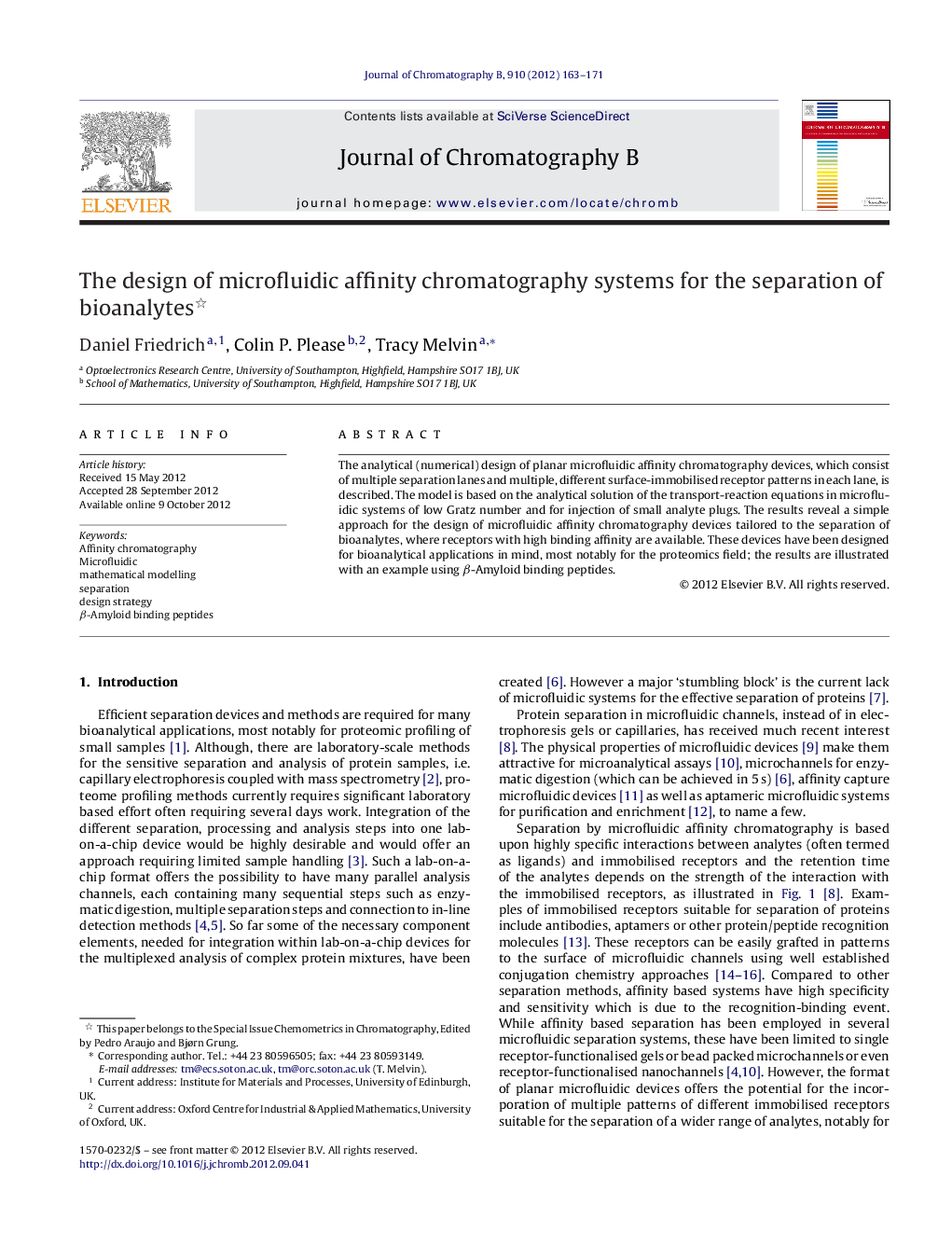| Article ID | Journal | Published Year | Pages | File Type |
|---|---|---|---|---|
| 1216757 | Journal of Chromatography B | 2012 | 9 Pages |
The analytical (numerical) design of planar microfluidic affinity chromatography devices, which consist of multiple separation lanes and multiple, different surface-immobilised receptor patterns in each lane, is described. The model is based on the analytical solution of the transport-reaction equations in microfluidic systems of low Gratz number and for injection of small analyte plugs. The results reveal a simple approach for the design of microfluidic affinity chromatography devices tailored to the separation of bioanalytes, where receptors with high binding affinity are available. These devices have been designed for bioanalytical applications in mind, most notably for the proteomics field; the results are illustrated with an example using β-Amyloid binding peptides.
► Simple approach for the design of microfluidic affinity chromatography devices. ► Multiple separation lanes and different surface-immobilised receptor patterns. ► Designs for the separation of large numbers of bioanalytes.
